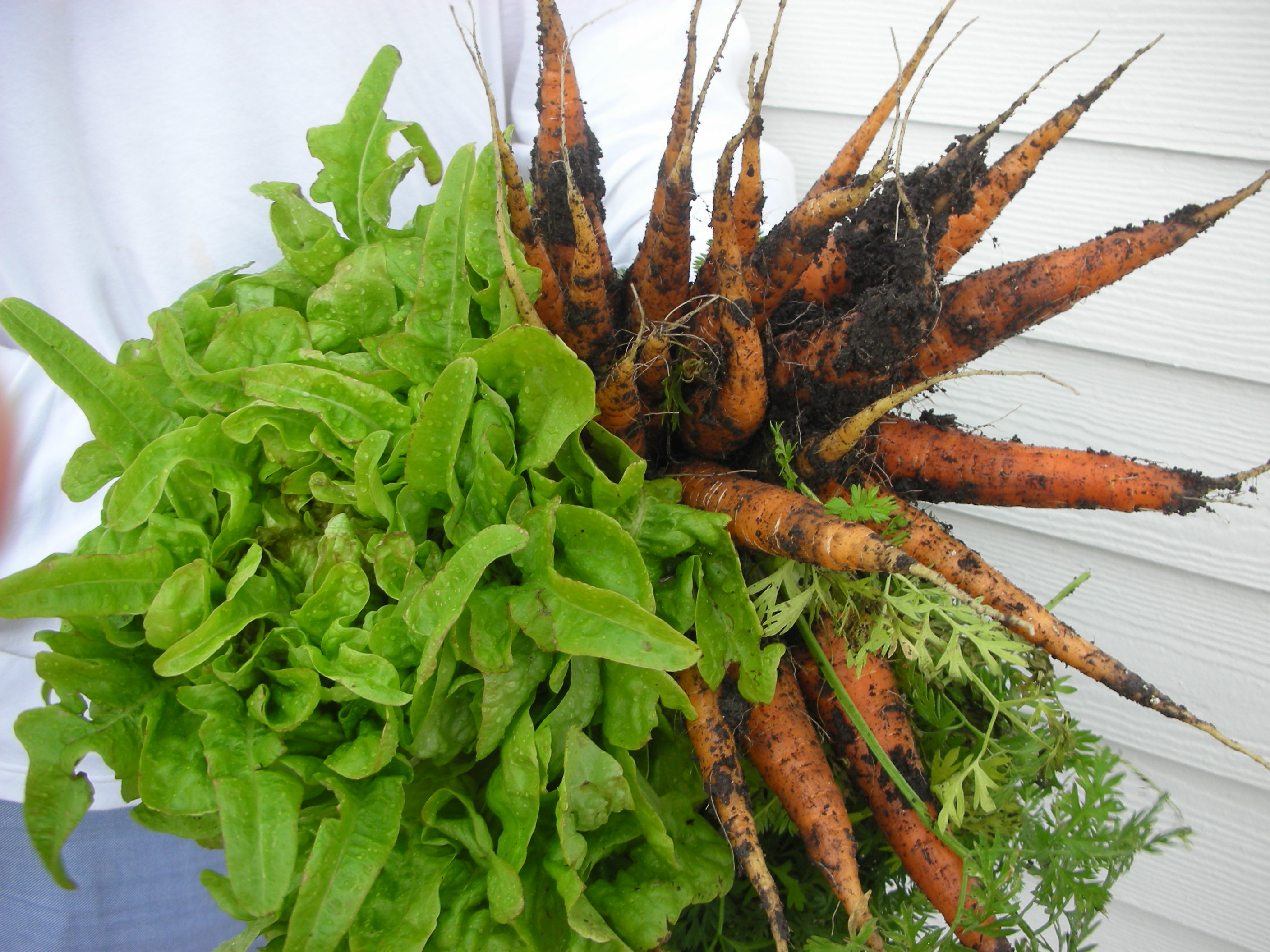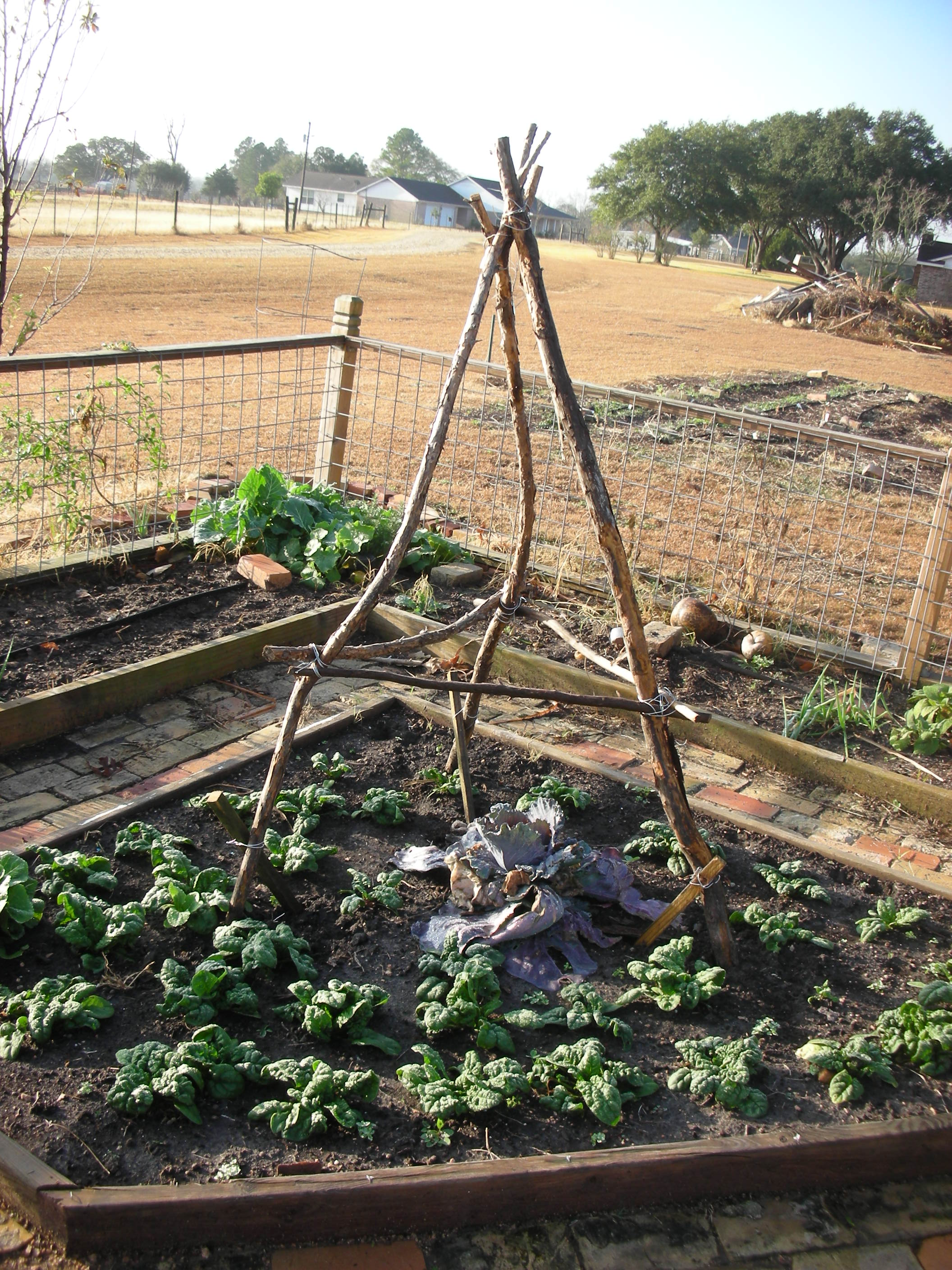How ‘bout that kale?! It hardly skipped a beat despite temperatures that dropped to 18° here in my southwest Austin garden. Brussels sprouts, collards and garlic also came through unscathed. They are truly cold-weather champs. The broccoli, cabbage and cilantro drooped a little after thawing but all recovered just fine. Carrots and radishes suffered some freeze damage above ground but the roots were protected below.
Swiss chard, peas and cauliflower, however, didn’t fare so well. All are susceptible to damage when temperatures drop into the 20s. Had I covered them with frost cloth they would have done fine but I didn’t have a chance and ended up with droopy, mushy plants that could not be salvaged. If you notice less than stellar cauliflower at local Famers Markets it can probably be attributed to the frigid weather. Thankfully the worst of the cold has passed and cole crops, root crops and peas can go into the garden now to provide a harvest about two months down the road. Keep an eye on the weather forecast and protect vulnerable plants if another hard freeze threatens.
The National Gardening Bureau has proclaimed 2018 as the Year of the Beet –Beta vulgaris. Did you know that vulgaris in Latin means common? That’s right, there is nothing vulgar about flavorful, jewel-toned beets. If one of your resolutions is to increase the plant slant in your diet be sure to include beets. From round to oblong, maroon to white and heirloom to hybrid most varieties can be grown in Texas during cooler weather. This year I’m looking forward to trying a recent introduction called ‘Shiraz’; a disease resistant variety developed in a collaborative effort through the Organic Seed Alliance (available from High Mowing Seeds: www.highmowingseeds.com).
Beets offer something to enjoy both above and below the soil, with tender greens and tasty roots, and a good dose of fiber, potassium, folate and health-promoting antioxidants. One of my favorite ways to eat them is to roast them slowly in the oven. Whole or sliced into wedges, scrubbed but unpeeled, they go into the oven lightly coated with oil and wrapped in foil and come out tender, earthy and delicious.

Harvest beets before they reach baseball size; these overgrown beet roots are tough and stringy inside but those succulent tops will make a luscious pot of beet greens.
To some people the earthiness of beets is overpowering. I often hear “they taste like dirt” but that is likely due to variety and/or sensitive palates – some beets contain larger amounts of an organic compound called geosmin, the more geosmin the stronger that muddy flavor comes through. For beets with more sweetness and less earthiness, harvest when young and tender and remove the skin which contains higher concentrations of geosmin. If you are especially sensitive to the mustiness of beets try growing ‘Detroit Dark Red’, ‘Avalanche’, ‘Crosby Egyptian’ and ‘Golden’ which are all low in geosmin.
The popular heirloom beet with the striped candy cane interior known as ‘Chioggia’ has high levels of geosmin; perhaps best avoided by folks who have an aversion to the robust “flavor” of garden soil.
For more on growing beets check out Jay’s post here: https://masterofhort.com/2013/01/growing-beets-beta-vulgaris/

Our view from the bathroom window has become more interesting lately. I think this is a red-shouldered hawk but would love corroboration or correction from any bird experts out there.
A new year means a new gardening season ripe with opportunities to improve our home-grown harvest and increase our vegetable consumption. Sowing in succession, growing vertically, interplanting and plant protection help maximize our efforts in the vegetable garden. Cheers to your harvest AND your health!
I share my posts on The Simple Homestead Blog Hop. Be sure to stop by and check out all the amazing things these gardeners and homesteaders are doing!













